Football Archaeology and Generative AI
One of the challenges or inconveniences of investigating football history is finding images that correspond to particular players and techniques, especially the further back you go. I'm always looking for such images, but there comes a point when you recognize that the chances of finding specific images are low.
In my life beyond Football Archaeology, I ghostwrite blogs, white papers, corporate policies, and conduct interviews and focus groups to make a few bucks. (See the Hire Me link below.) I don't explicitly use AI tools in my writing today, other than checking what I write with Grammarly. Still, some opportunities are coming up that require certification in AI Prompting, so I'm taking a course and decided to apply my neophyte generative AI skills to the Football Archaeology world.
Below are some attempts to create images of football events that happened long, long ago when action photography was far, far away.
1876 Yale-Princeton
This is an attempt to show what rugby/football looked like when Yale and Princeton met in 1876. There are 15 players per side. Since the tool did not understand early football well, it added helmets and jersey numbers to the players until instructed to exclude them.
1870s Walter Camp Kicking
Walter Camp was a strong punter and drop-kicker, so I wanted an image of him drop-kicking. However, it gave me an image that looked more like he was punting the ball, which I decided was close enough.
Fumble Out of Bounds
Before 1926, the ball remained live when fumbled out of bounds. Players on either team could down the ball out of bounds to gain possession, so there were mad scrambles for the ball with players stumbling over water buckets and other objects. I tried creating an image of players going for the ball several yards out of bounds. So far, the tool keeps them close to the sideline.
55-Yard Line Marker
The American football field had a 55-yard line until 1912. By then, some stadiums had yardage markers painted on the grandstand walls to help fans understand where the ball was on the field. I've only found one low-quality image of a 55-yard line marker on an American football field, so I used a reference image of Cornell's stands in 1900 with yardage markers on the wall.
I asked for a similar image with 50 and 55-yard line markers on the wall. It turned out pretty well.
Bradbury Robinson Throwing
I gave the tool an image of St. Louis U's Bradbury Robinson throwing an overhand spiral in 1906. (He effectively pioneered using the overhand spiral with the forward pass.) I wanted an image showing him throwing the ball to a receiver 20 yards downfield, but the tool could not change the perspective from the image I initially fed it.
So, here is Bradbury throwing the ball with no one in the picture to catch it.
Pudge Heffelfinger Pulling
Pudge Heffelinger gets credit for being football's first pulling guard during his days at Yale around 1890. I went through version after version, trying to show him pulling from the guard sport in the Traditional T formation versus a 7-man line. I added instructions to get the correct spatial relationships among players and told it he did not have a mustache, but...
Puntout
To date, I have found two period images of puntouts in action, so I submitted one of the images as a reference and provided all sorts of instructions for how the players aligned on the field.
My instructions did not work. I received numerous nonsensical (the technical term is hallucinogenic) images, such as the following, which does not even place the punter behind the goal line as instructed:
So, the tool I used (Sora) is not well-trained for generating images of early football and it struggled with my instructions for spatial relationships, which may be a function of my limited skills in providing appropriate instructions.
Moving forward, I will continue using period images and illustrations whenever possible. Still, I'm willing to give it the old college try if I can better illustrate a concept using an AI-generated image.
Click Support Football Archaeology for options to support this site beyond a free subscription.


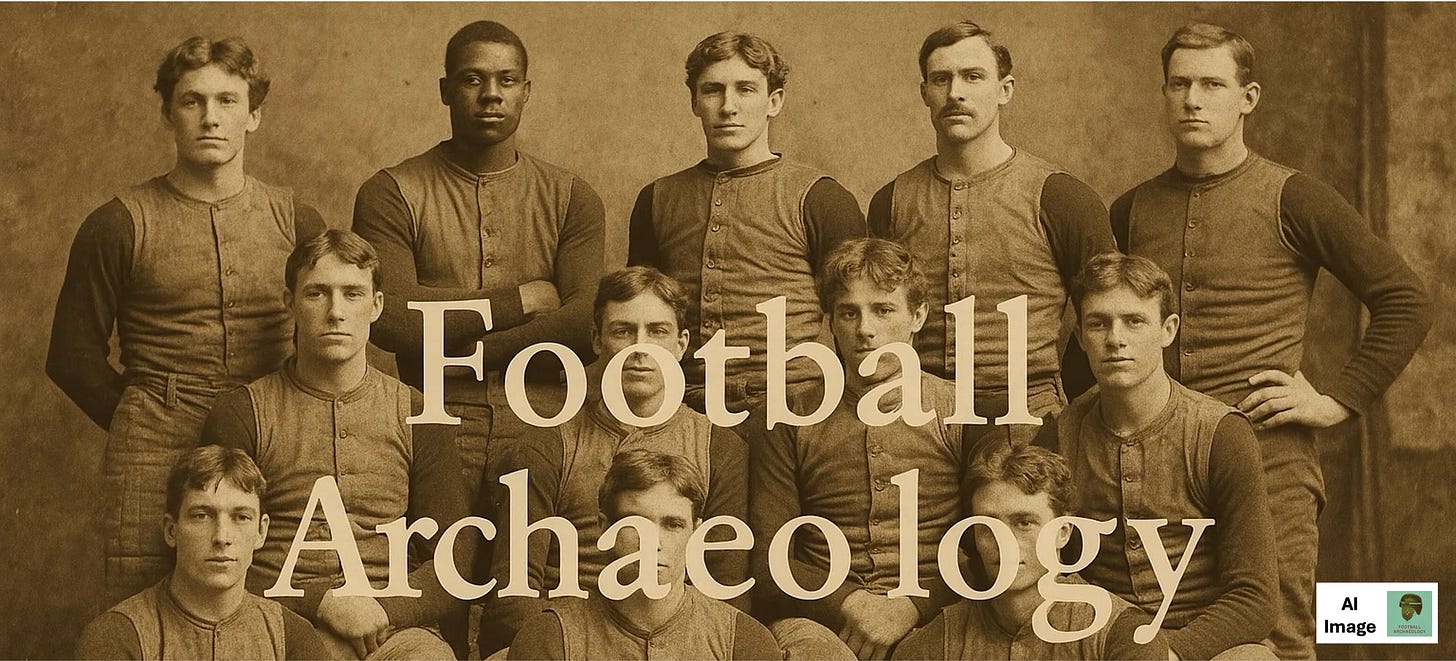

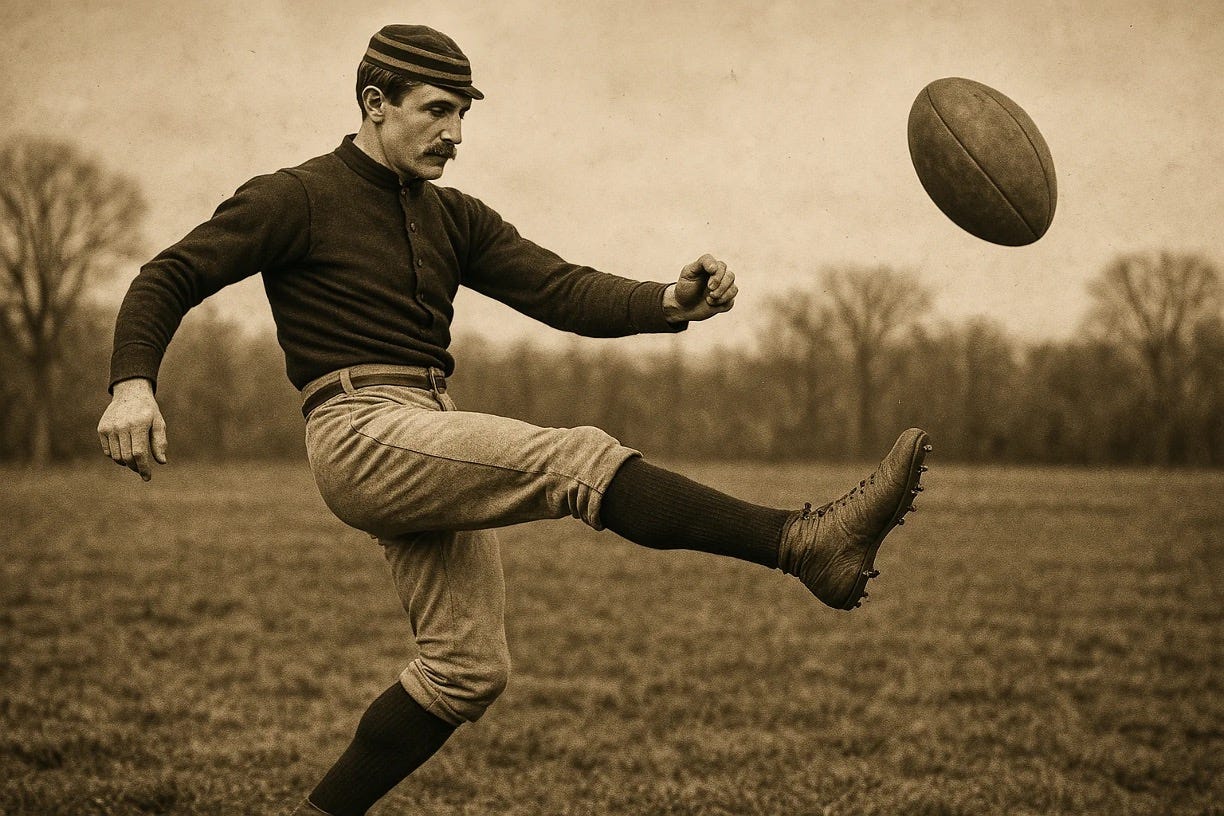


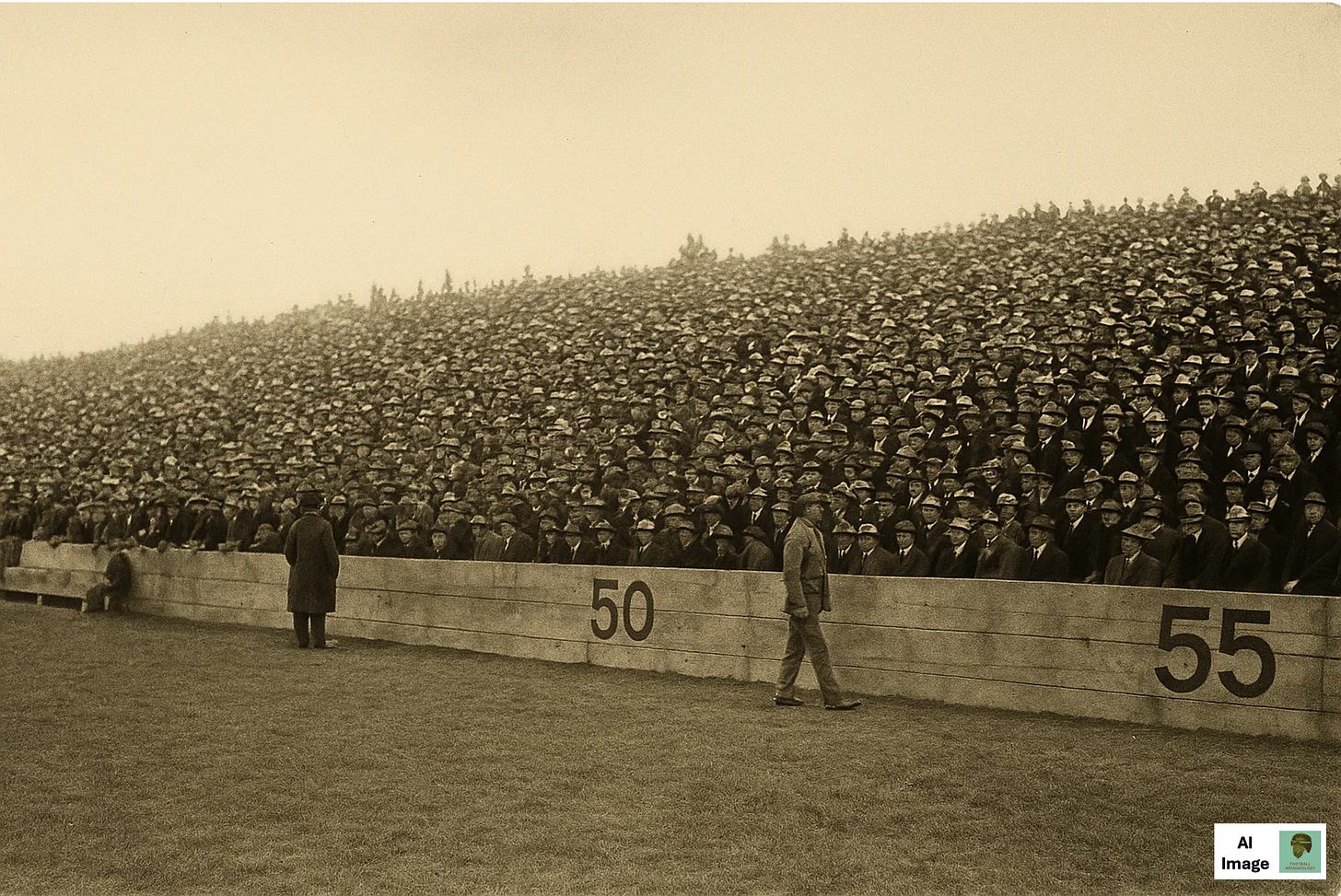

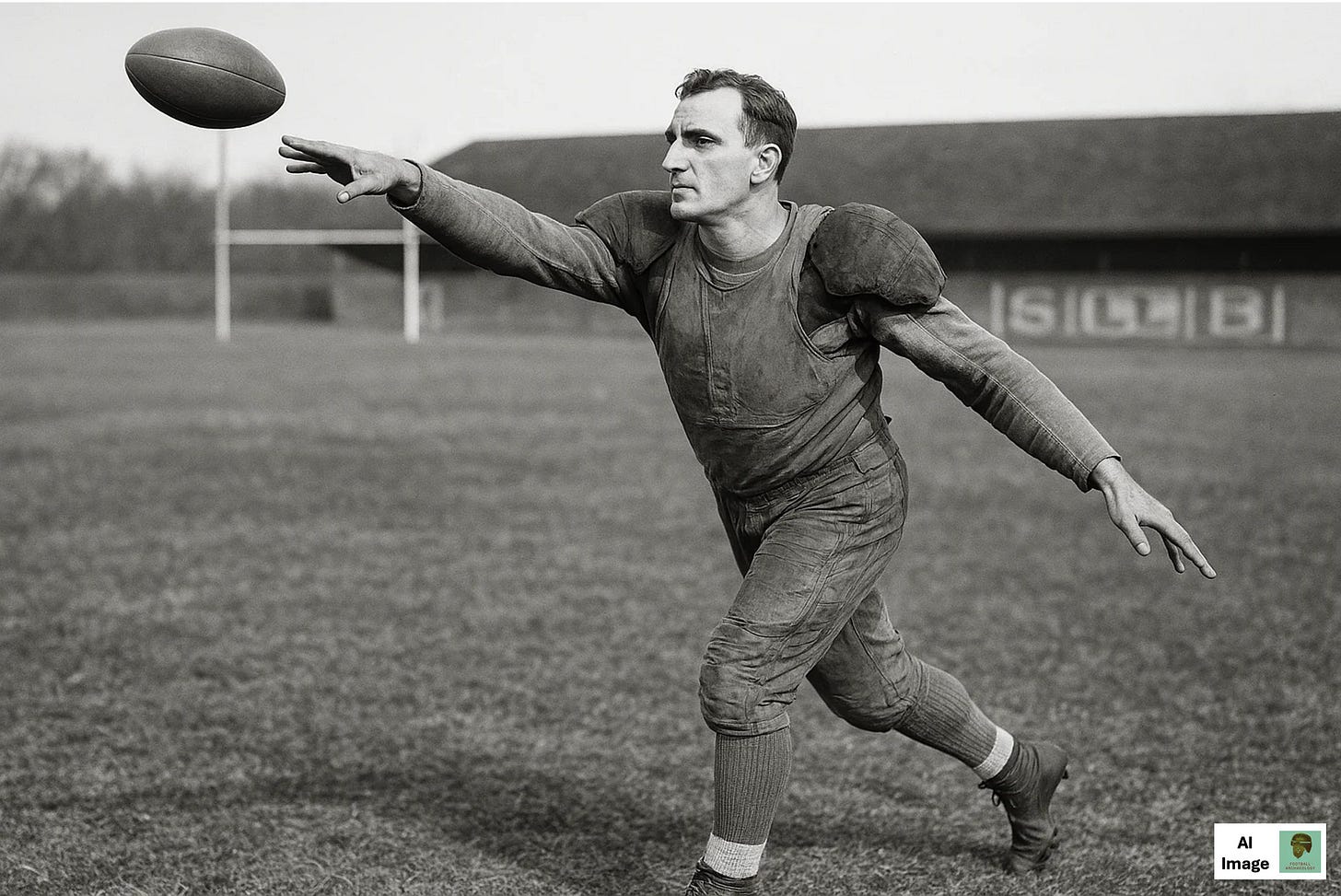
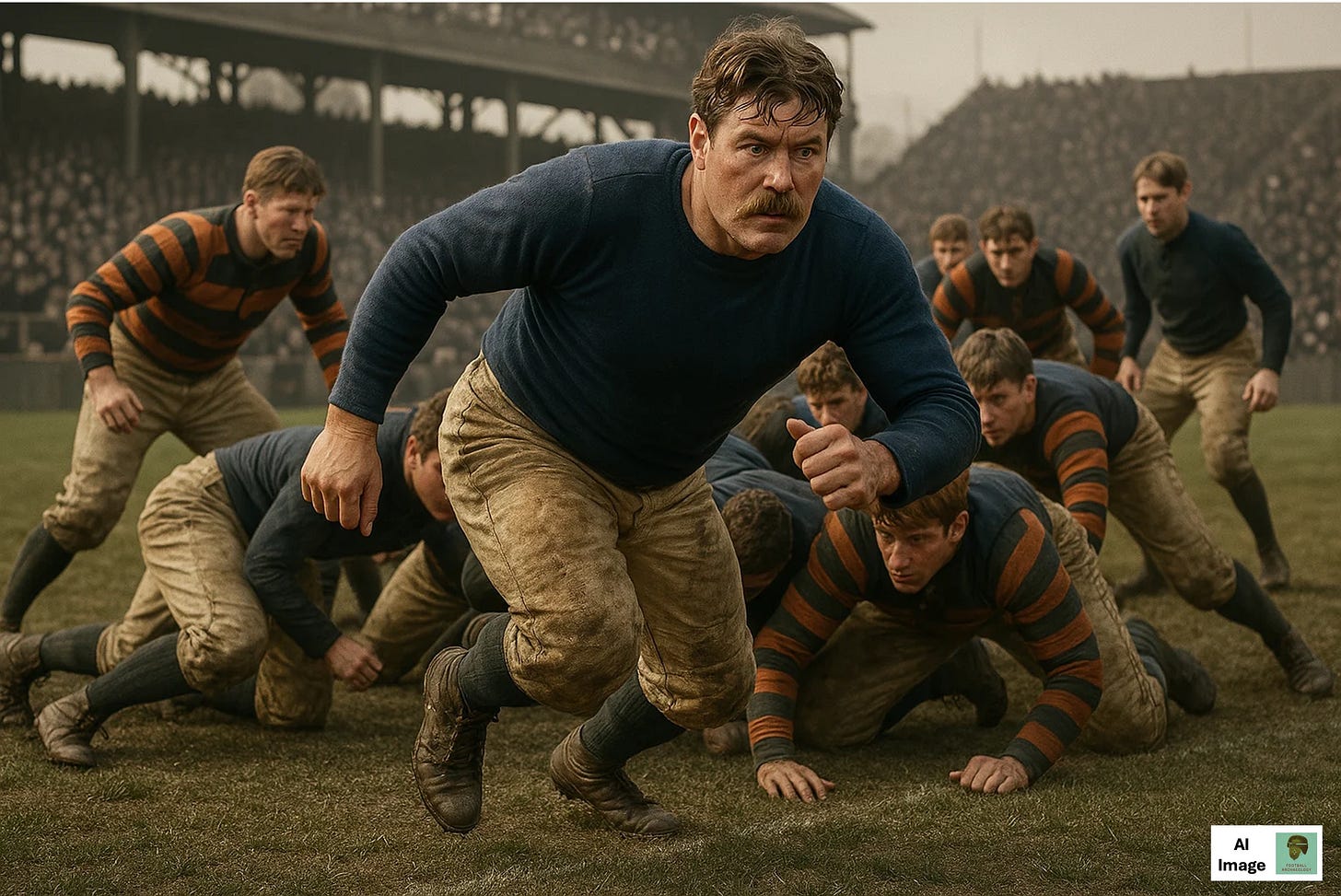

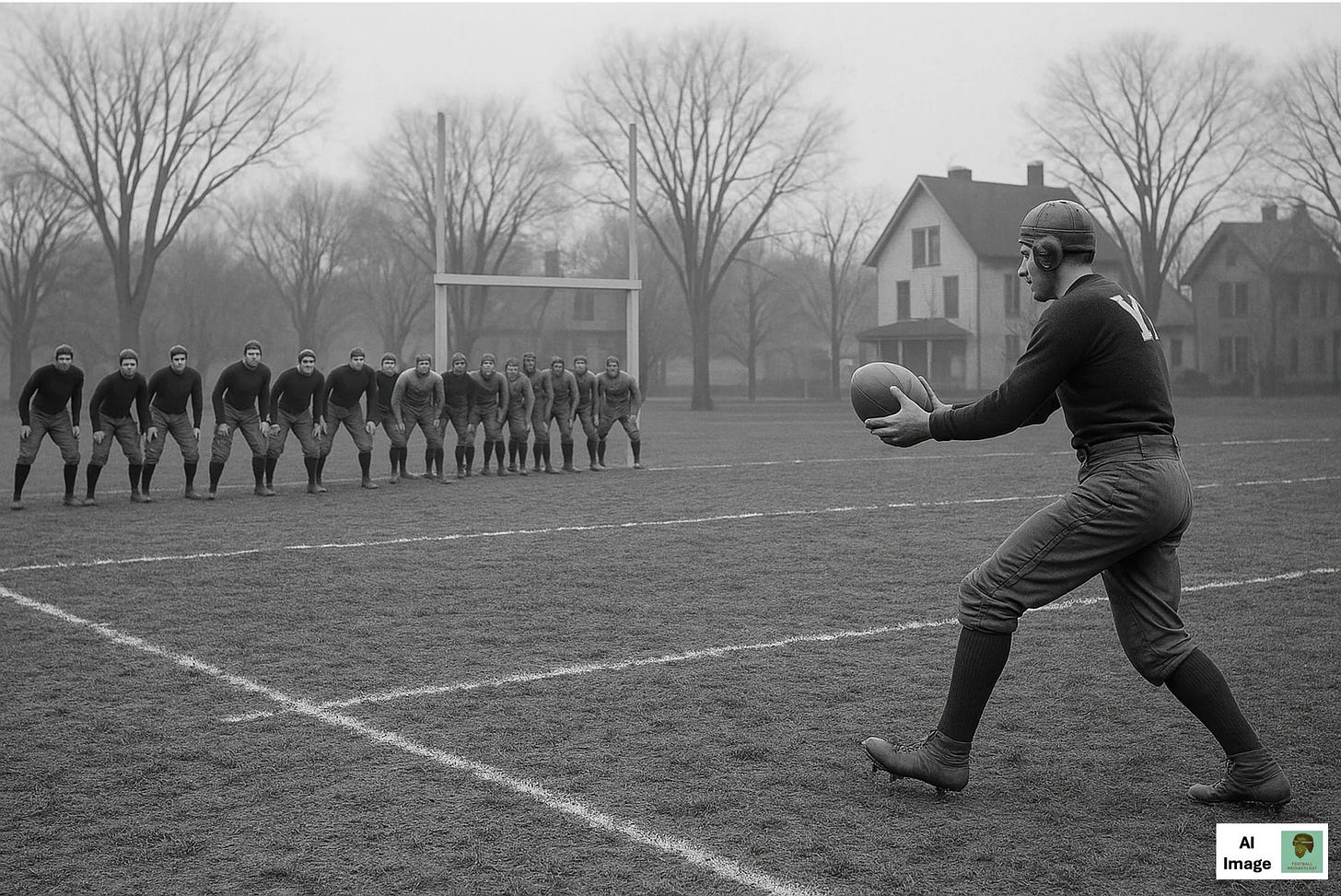
The movie that shows the early days' game as it was (progressively) played awaits ..